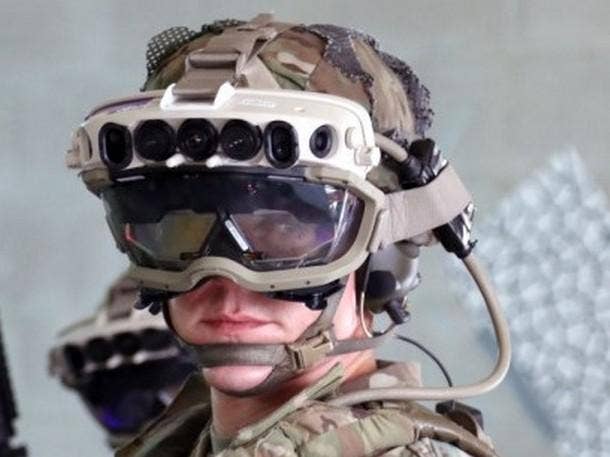Microsoft HoloLens Gets ‘Big Win’ From $21.9 Billion Army Contract
The mixed-reality advancements by Microsoft are ‘a sign that investments from the partner community [on HoloLens] won’t be wasted,’ one solution provider executive says.

Microsoft has landed a massive contract from the U.S. Army to produce headsets based on the HoloLens 2, a major validation for the company’s mixed-reality technology, solution provider executives told CRN.
“This is a big win for HoloLens,” said Michael Goldstein, president and CEO of LAN Infotech, a Microsoft partner in Fort Lauderdale, Fla.
[Related: 5 Things To Know About Microsoft’s HoloLens 2 Mixed Reality Headset]
Microsoft’s mixed-reality technology “has been getting better and better,” he said — as shown by the company’s demonstration this month of the new Microsoft Mesh platform, which will run on headsets including the HoloLens 2.
“I know it really opened my eyes to the new VR world provided by Microsoft,” Goldstein said of the Microsoft Mesh presentations.
For the Microsoft partner community, the HoloLens contract announcement is a welcome sign, said Reed Wiedower, global alliances leader and CTO for the Cognizant Microsoft Business Group.
“Seeing the news like this also means that Microsoft isn’t backing away from its ambitions in this space, which is key for continuity and a sign that investments from the partner community won’t be wasted,” Wiedower said.
The U.S. Army contract is worth up to $21.88 billion over up to 10 years, Microsoft said in a statement provided to CRN.
That’s more than twice the value of the JEDI cloud computing contract—the $10 billion Department of Defense contract that was won by Microsoft in October 2019, but which remains on hold amid legal challenges from rival Amazon Web Services.
Microsoft will be producing what is called the Integrated Visual Augmentation System (IVAS)—based on HoloLens 2—for the U.S. Army. The contract is for more than 120,000 IVAS headsets, and will now move “from rapid prototyping to production and rapid fielding,” Microsoft said.
The solution is “augmented by Microsoft Azure cloud services,” and delivers a platform “that will keep soldiers safer and make them more effective,” the company said.
“The program delivers enhanced situational awareness, enabling information sharing and decision-making in a variety of scenarios,” Microsoft said.
In its own announcement, the U.S. Army said IVAS uses a variety of sensors—including night, thermal and soldier-borne sensors—as well as augmented reality and machine learning technologies.
“The IVAS aggregates multiple technologies into an architecture that allows the soldier to fight, rehearse, and train using a single platform,” the U.S. Army said in its statement.
Originally announced in 2019, the HoloLens 2 introduced a number of enhancements over the original version including more than doubling the field of view and adding eye-tracking, so that the device knows where users are looking.
Over the past several years, many major investors in the AR/VR space were having trouble finding ways to monetize their investments in the area — and “a lot of big names saw some big failures,” Wiedower told CRN.
“Microsoft has taken a different approach – rather than going for the consumer space, they’re clearly targeting HoloLens at corporations and the government, places where very specific use cases make the ability to have an augmented reality system make financial sense,” he said.
“Many of the technologies we take for granted started life as projects in a DARPA garage, and with good reason: the defense space is one that has a longer time horizon than the consumer space to prove the viability of a platform,” Wiedower said. “Microsoft can iterate several versions over months and year, helping take HoloLens from something that today is perceived a niche product, and proving real-world benefits at a scale impossible to ignore.”
The best part, he added, is that Microsoft “won’t have to cater to the whims of a fairly fickle consumer space, and thus, can really set about delivering value on a regular cadence.”
“I think this is good news for all developers as well as the broader AR/VR space — because if Microsoft can make this product a profitable one, rather than a loss leader, it will encourage others to get back into the market. So it could start a virtuous cycle,” Wiedower said.